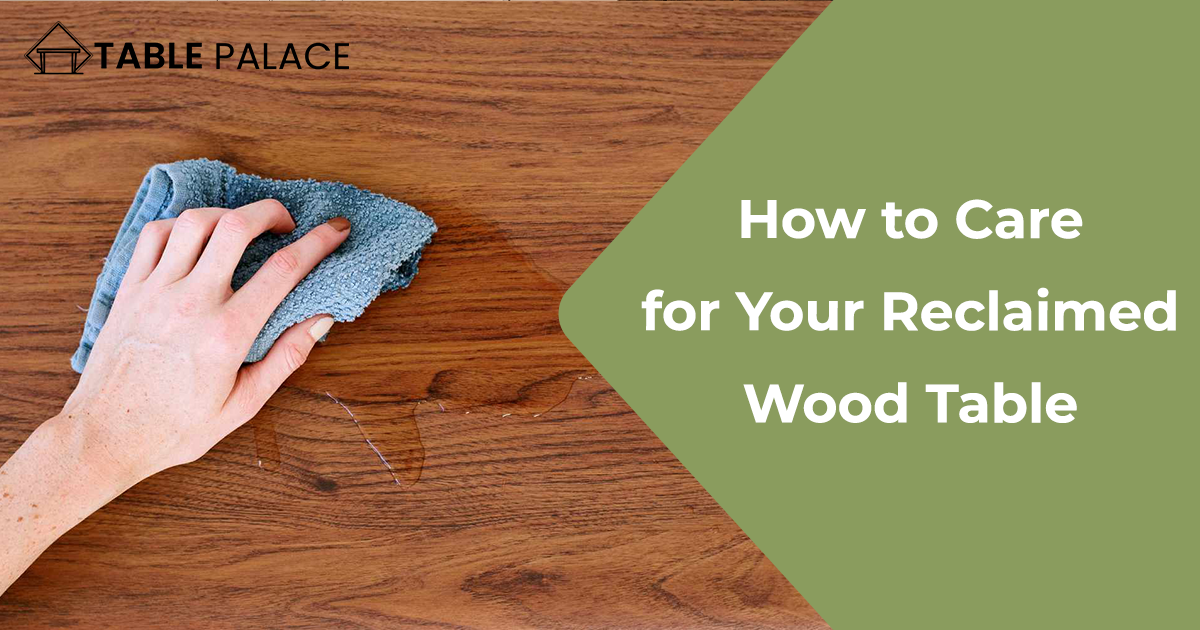If you have a reclaimed wood table, it means you went for a tough, sturdy, and practically indestructible dining table. To make sure it sticks around for a long time, you’ve got to take good care of it. The right tools and cleaners can help your table and its legs last a lifetime. With proper maintenance, your table might even turn into a family treasure.
Check out some easy tips below to keep your reclaimed wood table in great shape for generations to come.
Stained vs. Untreated Reclaimed Wood Tables
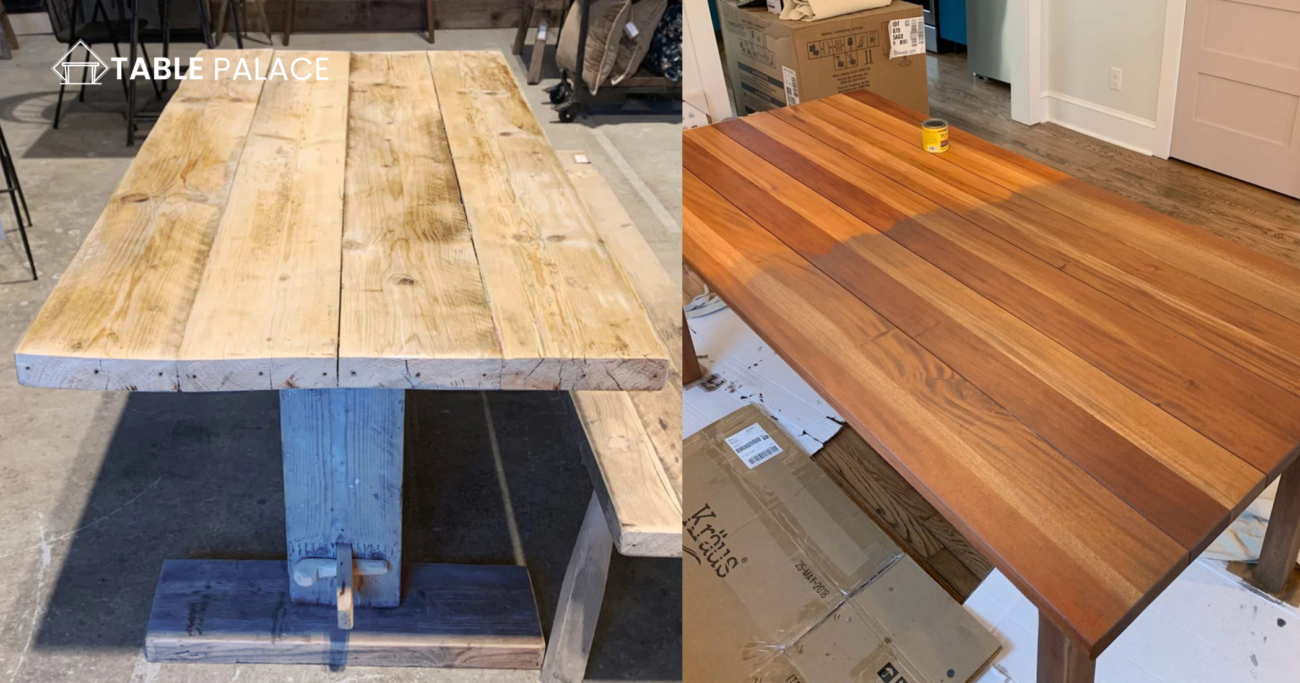
When you buy real wood furniture, don’t forget to add the right finish. A treated table will shield the reclaimed wood from spills and stains. You’ve got options like varnish, polyurethane, and oil for treating your table.
Since colonial times, shellac varnish has been keeping many custom living room tables safe. It’s a sturdy choice that lets you see the table’s wood grain and furniture leg styles. But be cautious – shellac doesn’t handle spills well. It’s better suited for a library table or an office trestle table. If you go with a shellac finish, wipe away any watermarks right away and use coasters to keep the surface looking good.
Types of Reclaimed Wood Table Finishes
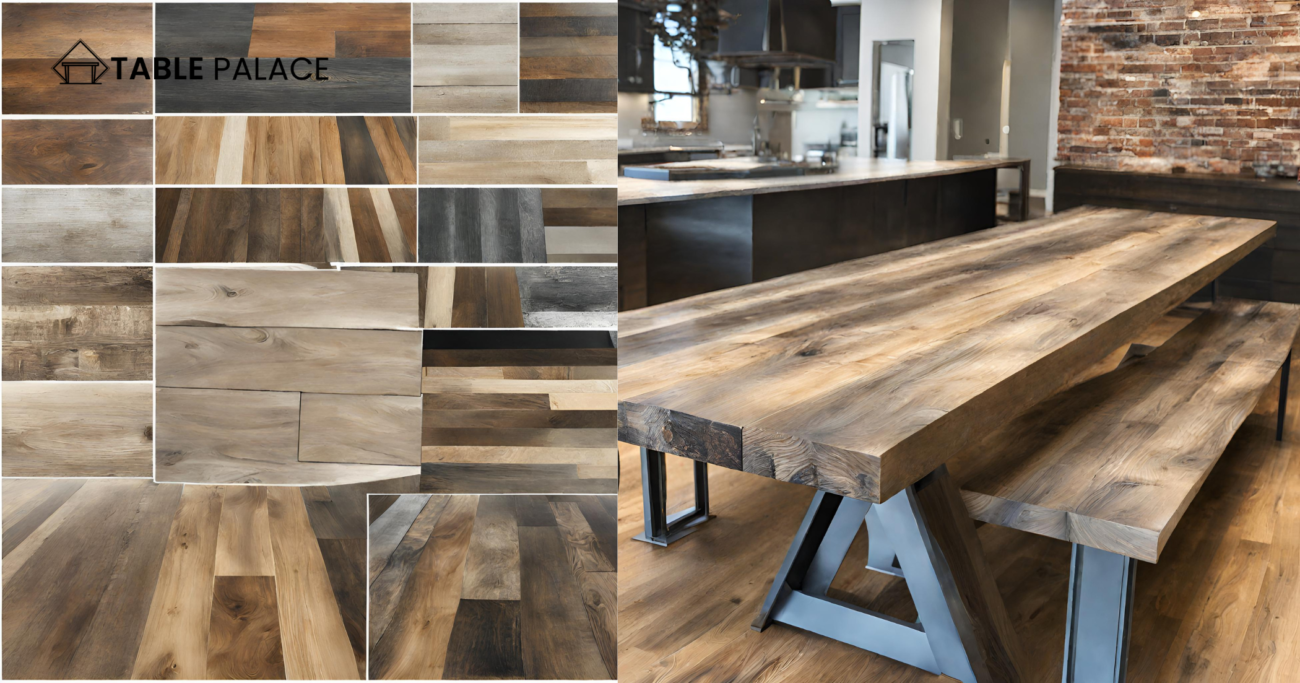
If you’re into sturdy, super-tough finishes for wood, consider oil-based polyurethane. It’s the kind of finish you find on basketball courts to prevent dents and scratches while being resistant to water. But, here’s the catch – applying polyurethane indoors releases some not-so-friendly smells into the air. Also, over time, the coating might get cloudy and turn yellow as it ages.
For a more natural look on reclaimed wood, try Danish oil or 100% pure tung oil. Danish oil is our top pick for custom living room tables and furniture leg styles. Applying these oils requires a soft cloth, and for a water-resistant surface, go for about six coats. Here’s a heads up – if you finish your table this way, any over-brushed areas will be quite noticeable. The good news is, that those imperfections only add more character to the reclaimed wood surface.
Invest in a Proper Wood Cleaner
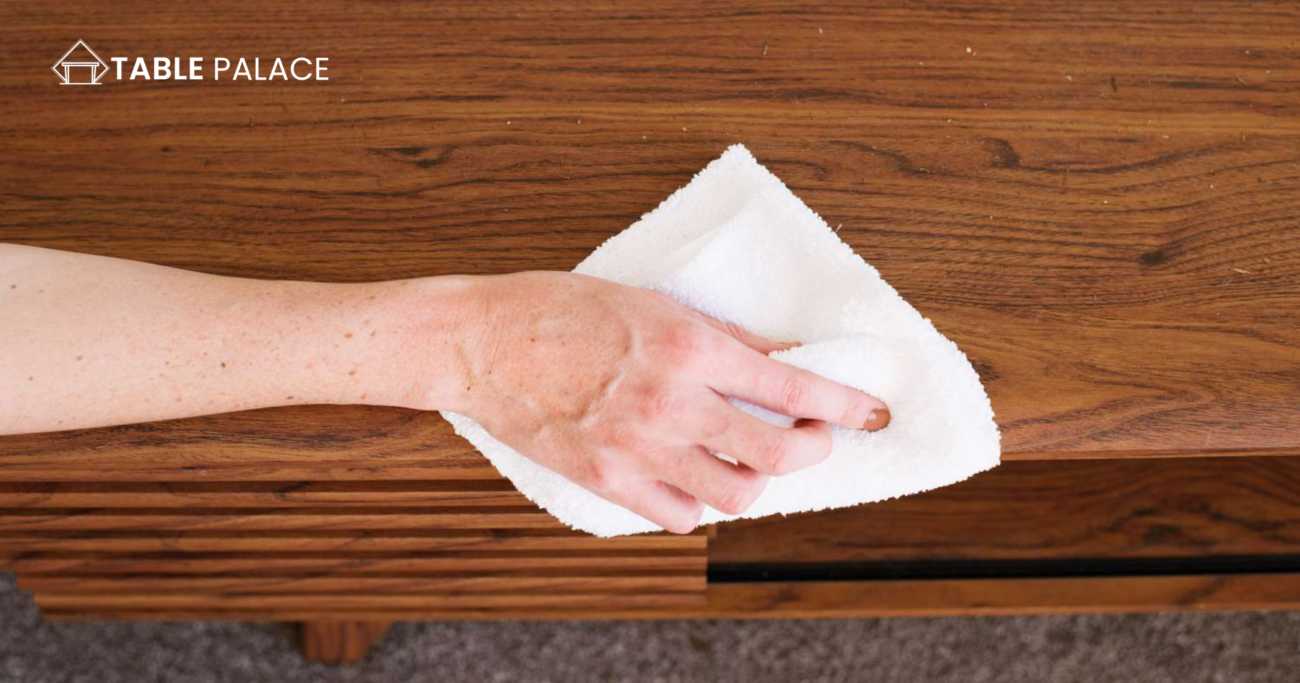
To effectively clean your reclaimed wood furniture, consider using a solution made by blending olive oil and white vinegar with water. This mixture not only provides a thorough cleaning but also serves as a natural and non-toxic option. Its optimal effectiveness is observed on reclaimed wood tables that lack varnish.
However, if your trestle table has a seal or treatment, it is advisable to take a different approach. In such cases, using a mild soap in conjunction with a soft cloth is recommended for cleaning. This tailored method ensures that your cleaning process aligns with the specific needs of your furniture, taking into account its surface treatment. By following these guidelines, you can maintain the cleanliness and appearance of your reclaimed wood furniture in a detailed and thoughtful manner.
Make Sure Your Reclaimed Wood Table Is Clean Before Applying Wood Cleaner
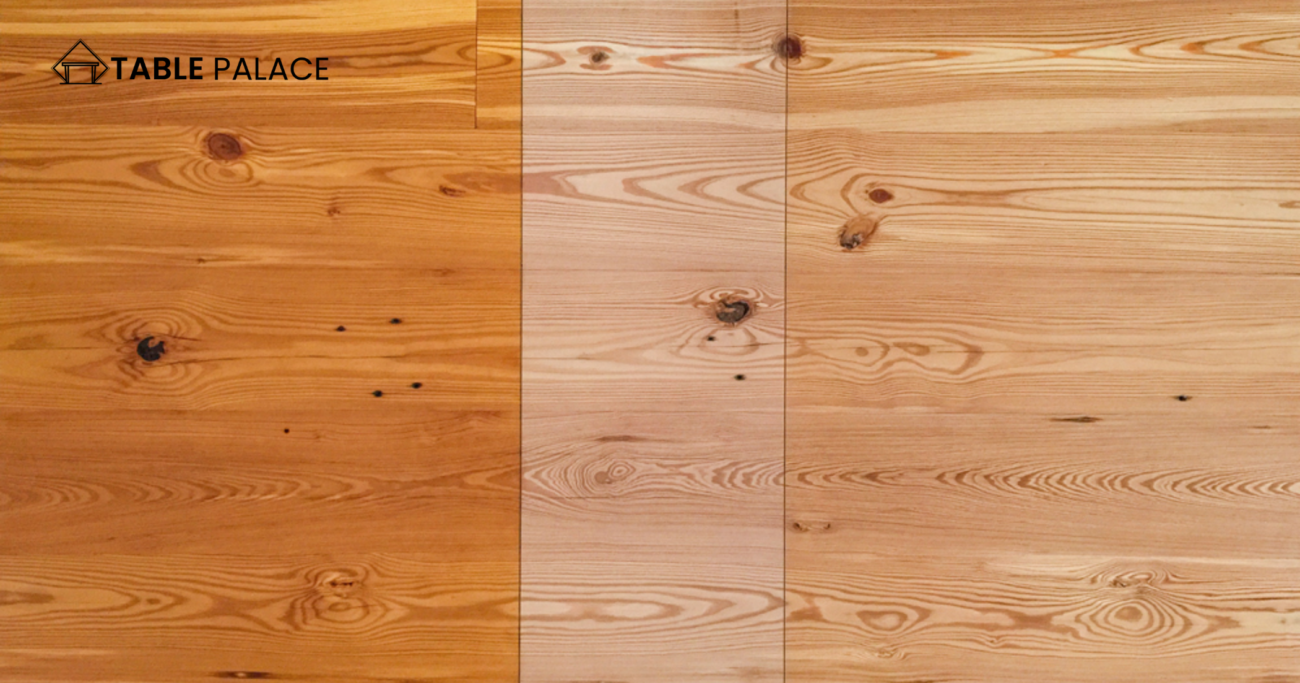
Reclaimed wood tables and live edge tables provide a unique opportunity to infuse the natural beauty of the outdoors into your living room. These tables boast distinctive characteristics such as cracks, knots, and flaws, which contribute to the allure of utilizing aged wood. To ensure the cleanliness of your custom living room table, employ a soft paintbrush to effectively reach and clean the intricate nooks and crannies.
When dealing with stubborn food residue, consider using an aerosol spray that can specifically be designed for computer cleaning. The bursts of air from the can prove highly effective in eliminating even the most resilient crumbs, ensuring a thorough and meticulous cleaning process for your distinctive furniture.
Get Rid of Food Crumbs and Spills around your Table
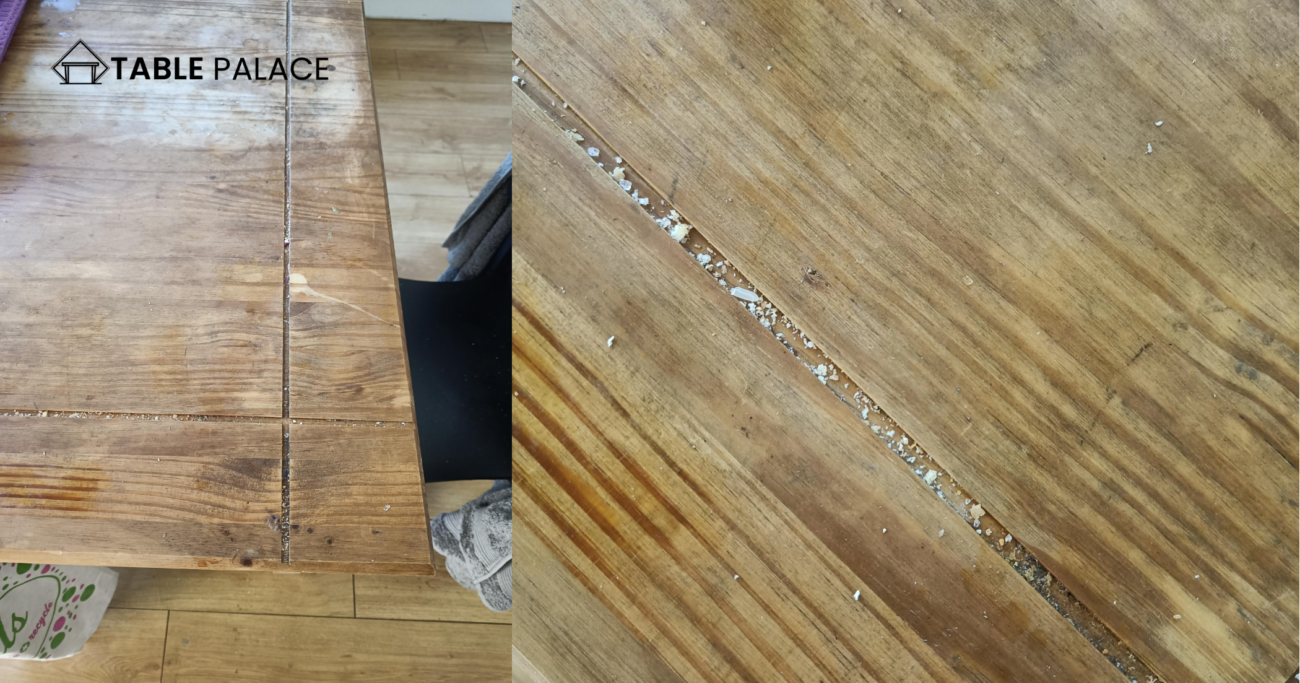
For best results, it is advisable to promptly address any crumbs or liquid spills on your reclaimed wood furniture. Crumbs, which may carry oils that can cause stains, and liquid spills, leading to residue stains, should be dealt with promptly. To ensure the thorough maintenance of your table, it is recommended to invest in a small, soft-bristled paintbrush. This tool proves effective in delicately clearing away crumbs nestled within the knots and cracks of your furniture, contributing to the sustained cleanliness and longevity of your reclaimed wood table.
Use Coasters on your Reclaimed Wood Table
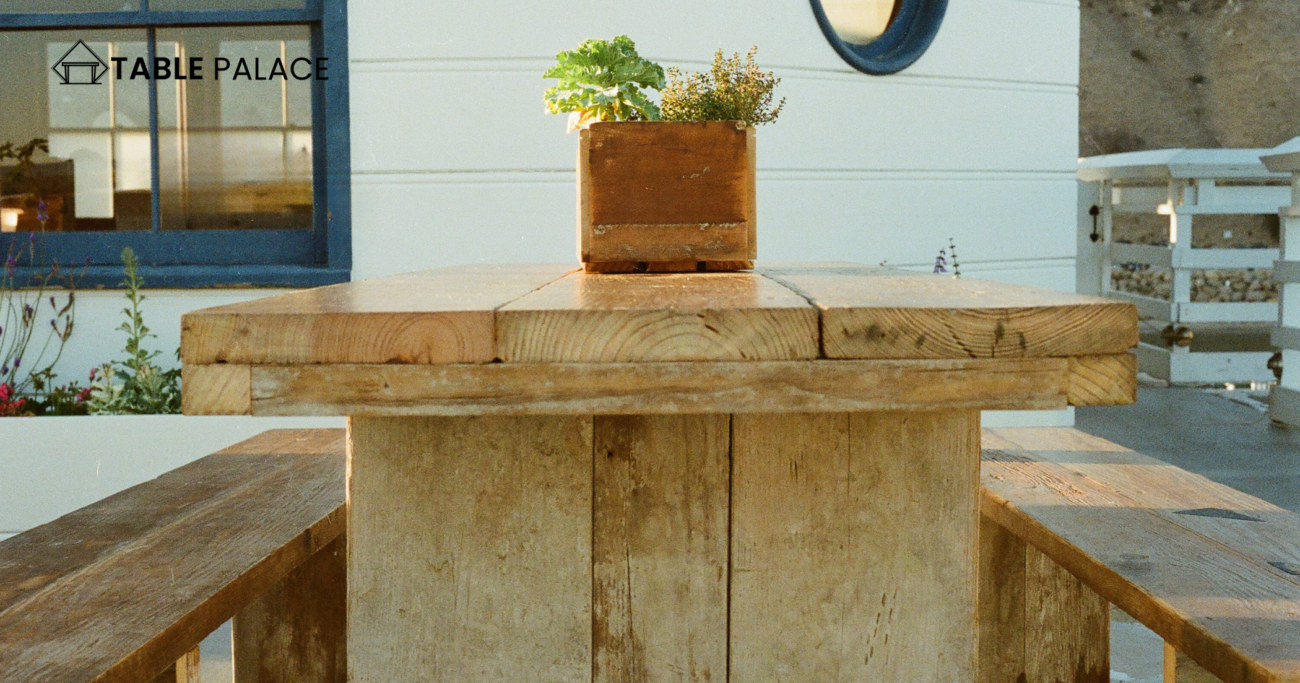
Place coasters around for everyone to use, but there’s always that one person who forgets. Now, you’re faced with the dreaded watermark on your custom living room table. How do you tackle it? There are several easy methods using natural ingredients like salt, water, or baking soda to eliminate watermarks. Our suggestion is to use non-gel toothpaste for removing watermarks. Afterward, a bit of furniture polish can be used to buff out the stubborn spots.
Avoid Overexposure to Heat and Sunlight
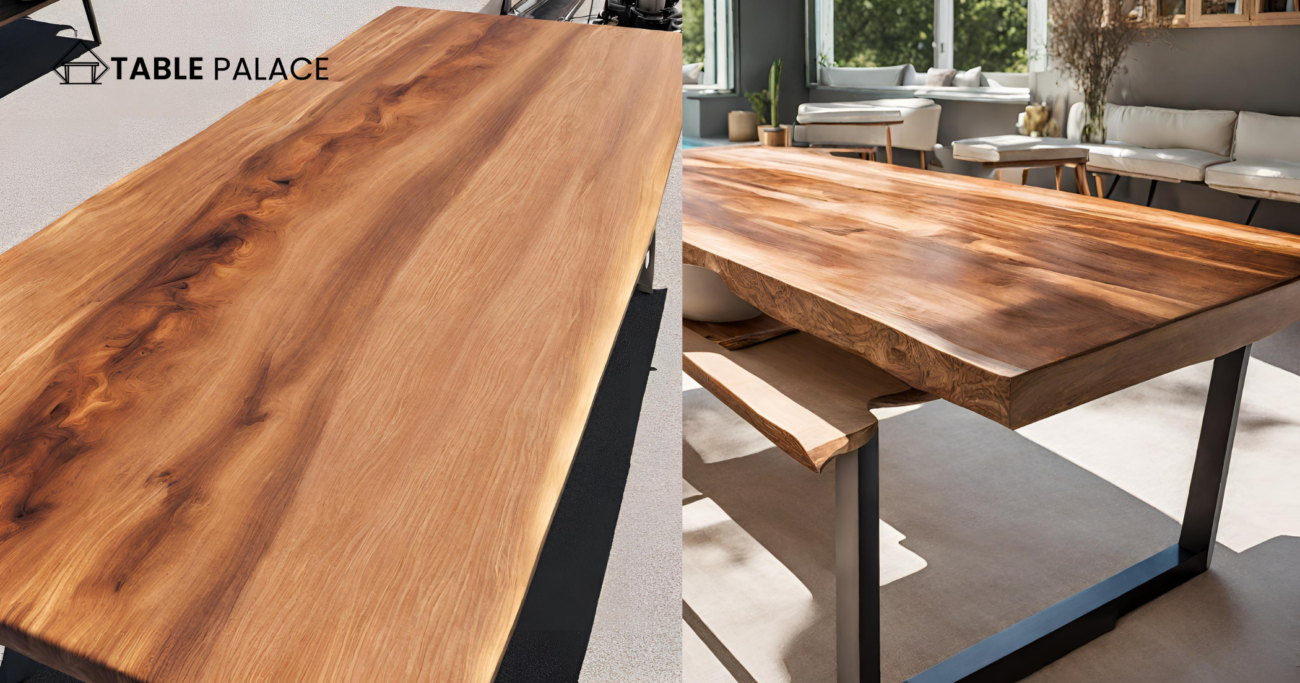
Avoid placing hot plates or pots directly on your reclaimed wood table, as this can result in stubborn marks that prove challenging to eliminate. To protect your table from potential burn marks, it is recommended to utilize trivets or hot pads.
Additionally, exercise caution against exposing your reclaimed wood furniture to direct sunlight. This preventive step is crucial in preventing your table from drying out and developing cracks. If your custom living room table is positioned outdoors, take proactive measures to keep it shaded, minimizing the risk of warping and discoloration over time.
Conclusion
Maintaining the longevity and aesthetic appeal of your reclaimed wood furniture involves a combination of care, caution, and timely interventions. Whether it’s protecting against spills and stains, addressing watermarks, or guarding against the adverse effects of heat and sunlight, each aspect requires thoughtful attention.
Employing natural cleaning solutions, using protective tools like soft brushes and trivets, and avoiding excessive heat and direct sunlight are integral practices in preserving the beauty and durability of your custom living room table. By incorporating these tips into your furniture care routine, you not only enhance its lifespan but also ensure that it continues to be a cherished centerpiece, rich with the character of reclaimed wood, for generations to come.

